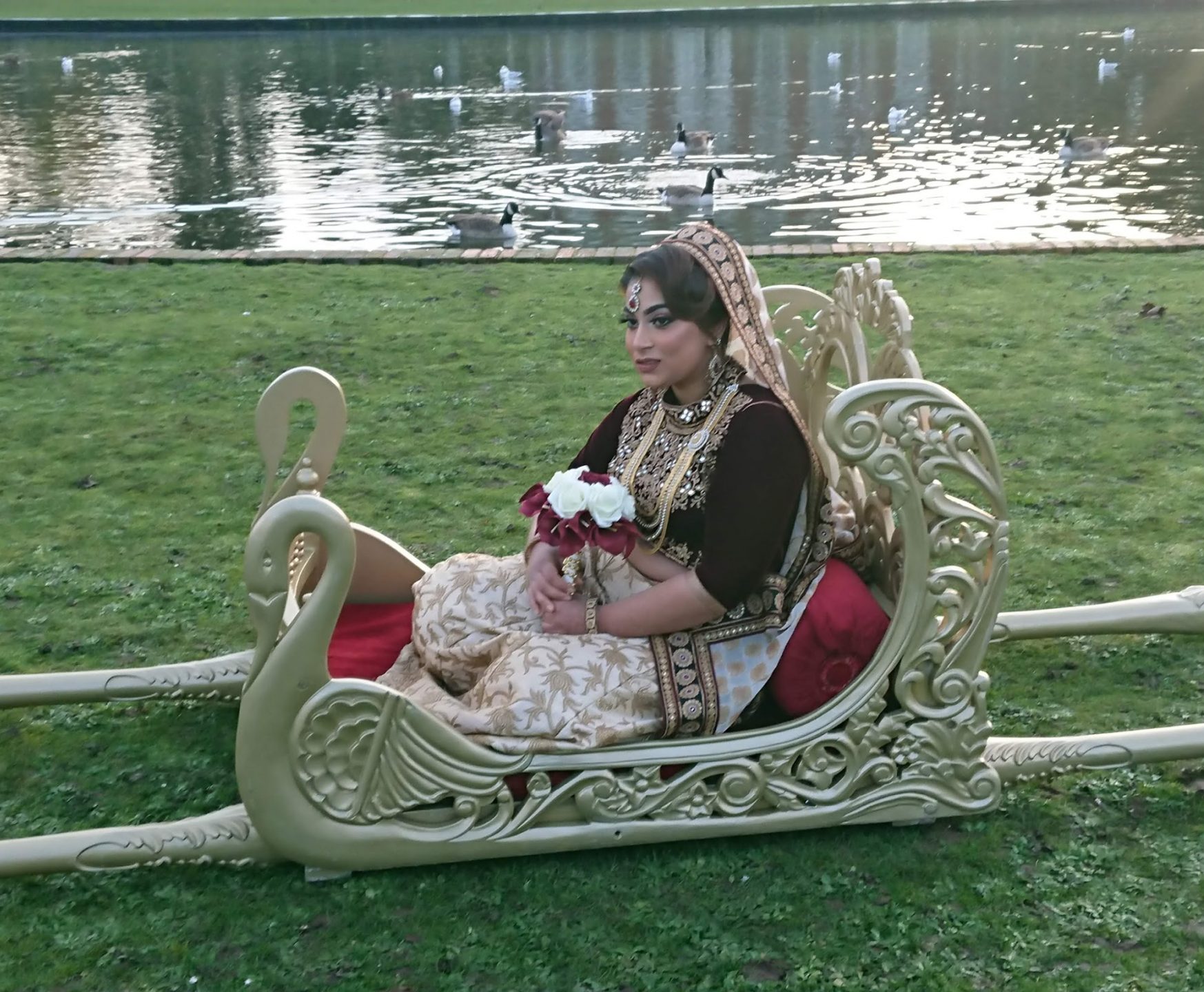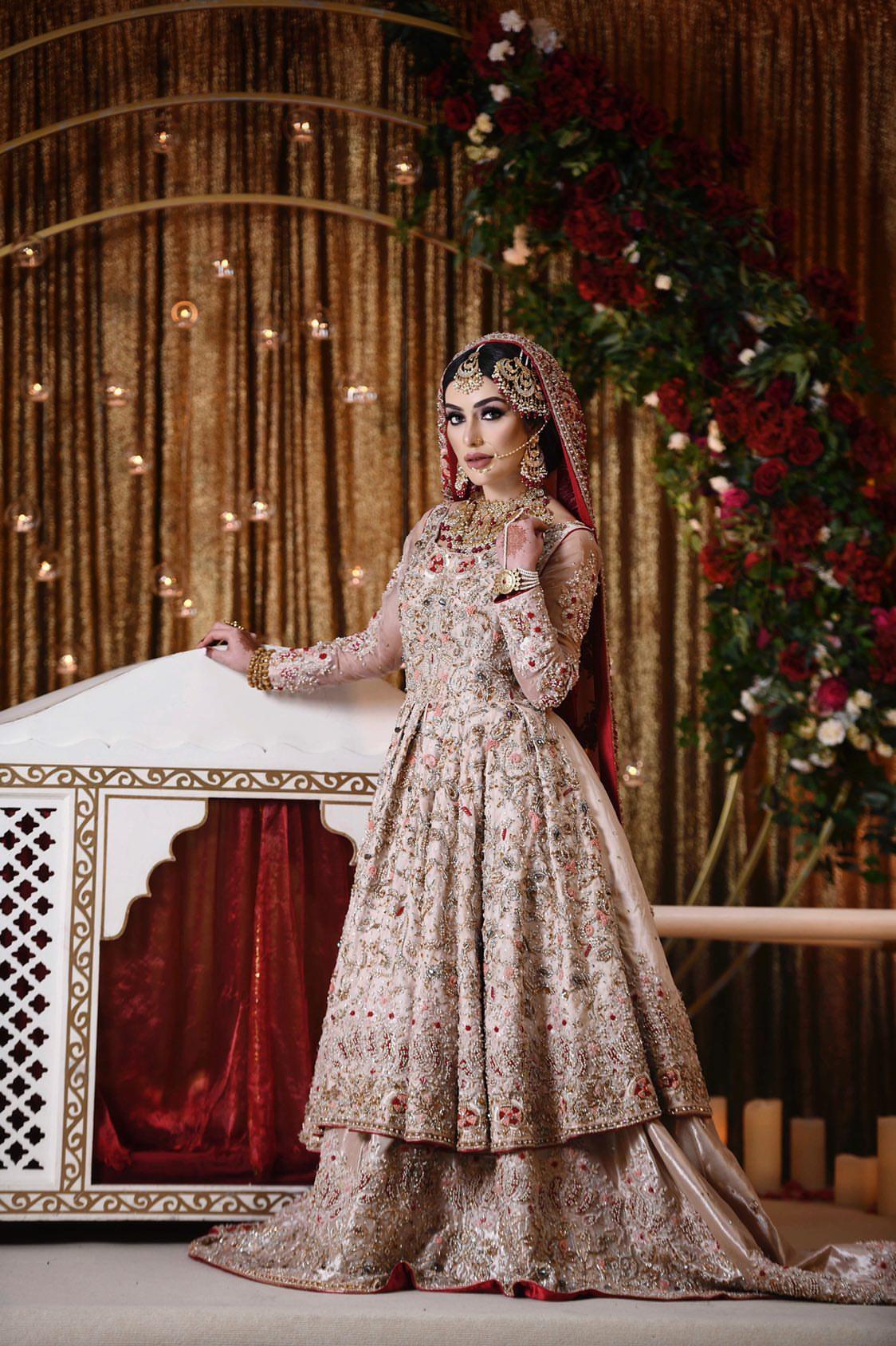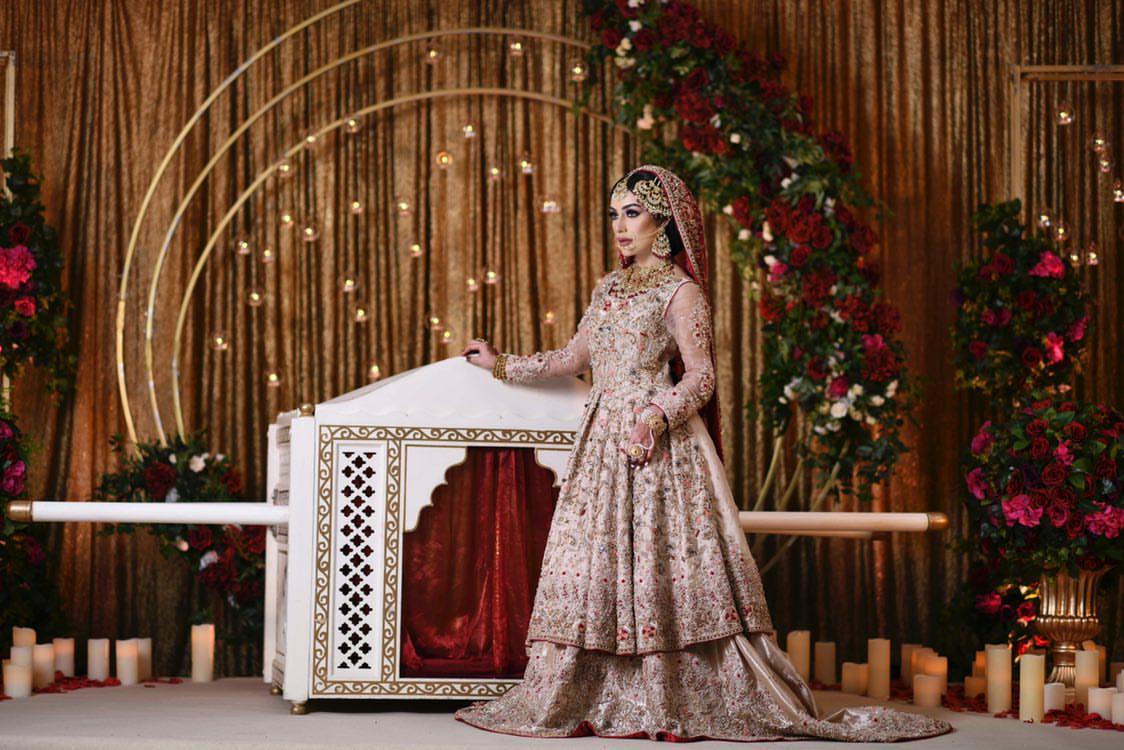Climbing in as gracefully as possible is quite an endeavor. The bride is wearing a red, heavily embroidered dress, traditional jewelry and high-heeled shoes. It is time to see her off; a couple of women tie a veil of fresh roses and jasmine on her head that covers her face. And then she is covered with a red cotton fabric. A bride’s beauty is not to be seen by strangers, so she is carefully concealed until she reaches her new home.
To give the ceremony a traditional touch, a doli is arranged. The bride’s family helps her climb into the doli—making sure she doesn’t hit her head or trip on her dress. This is my first time to see a bride and her doli, and I am fascinated beyond words.

I do not know the exact history of dolis—also known as palkis—except that these were used to transport brides, Indian princesses specifically, to their new homes thousands of years ago. The dolis are decorated with flowers, fabrics and ribbons.
Fast forward to today: the groom—my cousin—lives a few kilometers from the place where the wedding reception is being held. It is almost impossible to carry the doli with the bride all the way to the groom’s home, considering the time (it is already 11:30 pm), distance, traffic and all. So the bride’s brothers carry the doli from the stage to the car waiting outside.

I personally think that every desi bride deserves the doli experience. When my own sisters get married one day, I’d like to see them ride in their dolis too. It makes a girl feel like a princess.
And at the end of the ride, a prince awaits…

He offers a hand, which the bride bashfully accepts—she’s covered with flowers so nobody really sees her blush—and he helps her out. He then carries her off towards the car (also covered in roses and jasmine). And after eighty thousand six hundred and forty pictures later, the couple finally leaves to start their new life together.
Except that we all follow them to their new home. And welcome the bride to the family. And feed them sweets. And tease them for an hour or two. And take a million pictures. And take a peek at their gorgeously decorated bedroom.
And then, finally, we leave them alone.
Thank you to Nadia Masood for this article :-
http://nadiamasood.com/the-brides-doli






